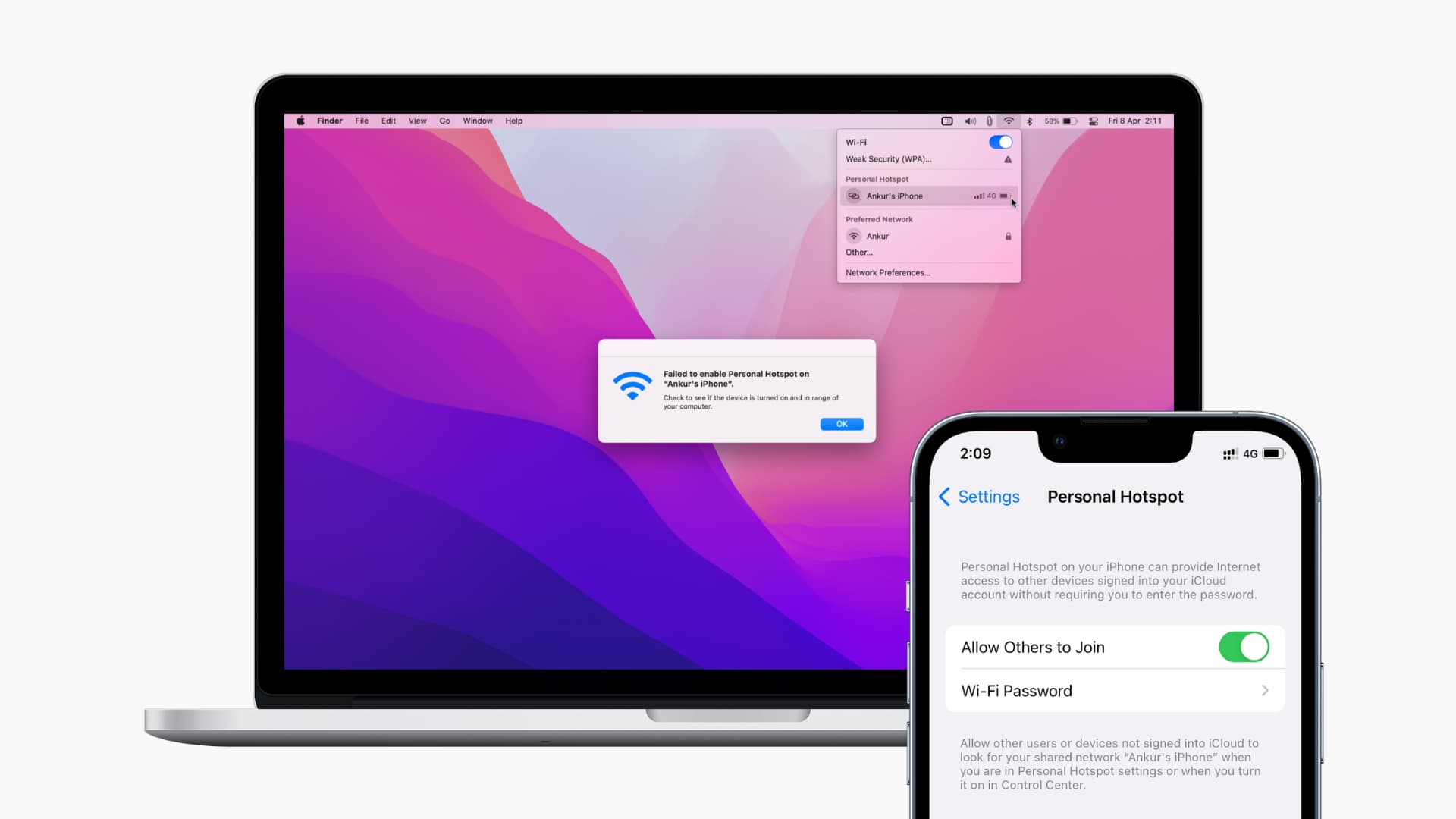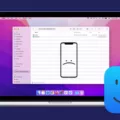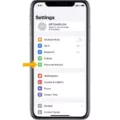In today’s digital age, having a reliable internet connection is crucial for staying connected and getting work done. However, there are times when even the most tech-savvy individuals face issues with their internet connection. One such scenario is when your MacBook or MacBook Pro is connected to an iPhone hotspot, but there is no internet access. This can be frustrating, but fear not, as there are several steps you can take to troubleshoot and resolve this issue.
First and foremost, it is important to ensure that your iPhone hotspot is working properly and has an active internet connection. You can do this by checking if other devices can connect to the hotspot and access the internet. If other devices are able to connect and access the internet, then the issue likely lies with your MacBook or MacBook Pro.
One possible reason for the lack of internet access on your MacBook could be the hotspot band being used. Your iPhone hotspot utilizes a specific frequency band to transmit data, and certain devices may only be compatible with specific bands. If the band being used by your iPhone hotspot is not compatible with your MacBook, it can result in a failure to connect to the internet. To address this, you can change the hotspot band on your iPhone by going to the settings and selecting a different band.
Another step you can take is to verify that you are entering the correct password for your iPhone hotspot on your MacBook. It is easy to mistype or forget the password, which can prevent your MacBook from connecting to the internet. Double-check the password and ensure that it is entered correctly.
Additionally, check if your MacBook is in battery saver or low power mode. These modes can limit the functionality of certain features, including Wi-Fi connection. Disable battery saver or low power mode and see if this resolves the issue.
If the above steps do not resolve the problem, try restarting your iPhone and MacBook. Restarting can help refresh the network settings and establish a new connection. After restarting, attempt to connect to the iPhone hotspot again and check if the internet access is restored.
In some cases, renewing the IP address on your MacBook can help resolve the issue. You can manually renew the DHCP lease, which will assign a new internet address to your MacBook. This can be done by going to System Preferences, selecting Network, choosing your Wi-Fi connection, and clicking on the Advanced button. From there, go to the TCP/IP tab and click on the Renew DHCP Lease button.
If none of the above solutions work, it may be worth considering tethering your MacBook to your iPhone using a USB cable. Tethering allows you to share your iPhone’s cellular data connection with your MacBook, bypassing the need for a Wi-Fi connection.
In rare cases, there may be underlying issues with your Mac’s hardware or software that are preventing it from connecting to the iPhone hotspot. In such situations, you can try resetting the PRAM (Parameter Random Access Memory) and SMC (System Management Controller) on your Mac. These are procedures that can help resolve various hardware and software issues.
To conclude, connectivity issues can be frustrating, especially when your MacBook or MacBook Pro fails to connect to an iPhone hotspot. By following the troubleshooting steps outlined above, you can increase the chances of resolving the issue and getting your internet connection back on track. Remember to check the hotspot band, verify the password, disable battery saver or low power mode, restart your devices, renew the IP address, consider tethering, and perform a PRAM and SMC reset if necessary. With patience and persistence, you can overcome this hurdle and stay connected wherever you go.

Why Does Your Hotspot Say Connected But No Internet?
There could be several reasons why your hotspot says it is connected but there is no internet access. Here are some possible explanations:
1. Network congestion: If there are too many devices connected to your hotspot or if you are in an area with a lot of network traffic, it can cause slow or no internet connectivity.
2. Incorrect APN settings: Access Point Name (APN) settings are required for your device to connect to the internet. If these settings are incorrect or missing, your device may show as connected but not have internet access.
3. Mobile data limit reached: If you have a limited data plan and you have reached your data limit, your hotspot may still allow devices to connect, but there won’t be any internet access until you either purchase more data or your plan renews.
4. Band incompatibility: Your hotspot uses a certain band to provide internet connectivity. Some devices only work on specific bands. If the band your hotspot uses is not compatible with your connected device, it may show as connected but not be able to access the internet.
5. Firmware or software issues: Sometimes, firmware or software updates can cause connectivity issues. It’s a good idea to check for any available updates for your hotspot and connected device and install them if necessary.
6. Network provider issues: There could be temporary network outages or problems with your network provider that are causing the lack of internet connectivity. Contacting your network provider to inquire about any known issues in your area may help resolve the problem.
7. Hardware problems: In some cases, there may be hardware issues with your hotspot or connected device that are preventing internet access. This could include faulty antennas, damaged cables, or a malfunctioning network card. Troubleshooting or seeking professional assistance may be necessary to resolve these issues.
To troubleshoot the problem, you can try the following steps:
– Restart your hotspot and connected device.
– Check if other devices can connect to your hotspot and access the internet.
– Verify that you have an active data plan and sufficient data balance.
– Double-check the APN settings on your device.
– Try connecting your device to a different hotspot or Wi-Fi network to see if the issue persists.
– Update the firmware or software on your hotspot and connected device.
– Contact your network provider for further assistance.
If none of these steps resolve the issue, it may be necessary to seek technical support from your network provider or the manufacturer of your hotspot or connected device.
Why is Your Hotspot Not Working On Your Macbook?
There could be several reasons why your hotspot is not working on your Macbook. Here are some possible causes and solutions to try:
1. Check your internet connection: Make sure that you have a stable internet connection on your Macbook. If your internet is not working, your hotspot won’t work either. Try connecting to a different Wi-Fi network or restarting your router.
2. Verify hotspot settings: Go to the Settings menu on your Macbook and select the “Network” option. Ensure that the Personal Hotspot feature is enabled and that the settings are correctly configured. Check if the Wi-Fi password is correct and try changing it to see if that resolves the issue.
3. Disable firewall or security software: Some security settings or firewall configurations on your Macbook may block the hotspot functionality. Temporarily disable any firewall or security software that may be interfering with the hotspot connection.
4. Restart your Macbook: Sometimes, simply restarting your Macbook can resolve temporary software glitches that may be causing the hotspot to malfunction. Turn off your Macbook, wait for a few seconds, and then turn it back on.
5. Update your Macbook software: Ensure that your Macbook is running the latest version of macOS. Outdated software can sometimes cause compatibility issues with hotspot functionality. Go to the App Store and check for any available software updates.
6. Reset network settings: If none of the above solutions work, you can try resetting the network settings on your Macbook. Go to the Network preferences, select the Wi-Fi connection, and click on the “Advanced” button. From there, you can choose to reset the network settings. Note that this will remove all saved Wi-Fi networks and other network configurations, so you will need to set them up again.
If these steps do not resolve the issue, it may be a hardware problem with your Macbook’s Wi-Fi adapter. In that case, it is recommended to contact Apple support or visit an authorized service center for further assistance.
Why is Your Macbook Connected to Wi-Fi But No Internet?
There could be several reasons why your MacBook is connected to Wi-Fi but not able to access the internet. Here are some possible explanations:
1. Wi-Fi Signal Issues:
– Your MacBook might be connected to a Wi-Fi network with a weak signal. This can result in an unstable or slow internet connection.
– Check the Wi-Fi signal strength indicator in the menu bar to ensure that the signal is strong enough.
2. Router Problems:
– Your Wi-Fi router might be experiencing issues. Try restarting your router to see if it resolves the problem.
– Ensure that other devices connected to the same Wi-Fi network are able to access the internet. If they can’t, it’s likely a router issue.
3. Network Configuration:
– Check if your MacBook’s network settings are configured properly. Go to System Preferences > Network and verify that Wi-Fi is selected and connected.
– Ensure that your Wi-Fi network’s DNS settings are correct. You can try using Google’s public DNS servers (8.8.8.8 and 8.8.4.4) to see if it resolves the issue.
4. IP Address Conflict:
– Sometimes, an IP address conflict can prevent your MacBook from accessing the internet. Restarting your Mac can help resolve this issue by renewing the IP address it was assigned.
– Alternatively, you can manually renew your IP address by going to System Preferences > Network > Wi-Fi > Advanced > TCP/IP > Renew DHCP Lease.
5. Firewall or Antivirus Settings:
– Check if any firewall or antivirus software on your MacBook is blocking the internet connection. Temporarily disable them and check if you can access the internet.
6. Wi-Fi Network Authentication:
– Ensure that you have entered the correct Wi-Fi password if the network is password-protected. An incorrect password can prevent your MacBook from accessing the internet.
7. Wi-Fi Network Limitations:
– Some Wi-Fi networks impose limitations on the number of devices that can connect simultaneously. Check if there is a device limit on your network and disconnect unused devices.
If none of these solutions work, it could be a more complex issue related to your internet service provider or network configuration. In such cases, contacting your ISP or seeking professional assistance may be necessary.
Why Won’t Your Mac Connect to the Internet Or Hotspot?
There could be several reasons why your Mac is not connecting to the internet or a hotspot. Here are some potential causes and solutions to help you troubleshoot the issue:
1. Verify Wi-Fi Connection: Ensure that you are connected to the correct Wi-Fi network or hotspot. Sometimes, multiple networks with similar names can cause confusion.
2. Check Wireless Diagnostics: Macs have a built-in tool called Wireless Diagnostics that can help identify and fix Wi-Fi issues. Press and hold the Option key while clicking on the Wi-Fi icon in the menu bar and select “Open Wireless Diagnostics.” Follow the on-screen instructions to diagnose any problems.
3. Update macOS: Make sure your Mac is running the latest version of macOS. Apple regularly releases updates that address Wi-Fi connectivity issues. Go to the Apple menu > System Preferences > Software Update to check for any available updates and install them if necessary.
4. Verify Physical Hardware: Ensure that your Wi-Fi router or hotspot is turned on and functioning properly. Check if other devices can connect to the same network. If not, restart the router or contact your internet service provider.
5. DNS Settings: Sometimes, incorrect Domain Name System (DNS) settings can prevent your Mac from connecting to the internet. Go to System Preferences > Network > Wi-Fi > Advanced > DNS tab. Remove any DNS servers listed and click the “+” button to add Google DNS servers (8.8.8.8 and 8.8.4.4) or your ISP’s recommended DNS servers.
6. Reset PRAM and SMC: Resetting the Parameter RAM (PRAM) and System Management Controller (SMC) on your Mac can help resolve various hardware and connectivity issues. Instructions for resetting PRAM and SMC can be found on Apple’s support website.
7. Restart Mac: Sometimes, a simple restart can fix connectivity problems. Go to the Apple menu > Restart, or press and hold the Power button until the Mac shuts down, then turn it back on.
If none of the above solutions work, it’s recommended to contact Apple Support or an authorized service provider for further assistance.
Conclusion
The Macbook is a highly efficient and reliable device that offers a seamless internet experience for its users. However, like any technology, it may encounter connectivity issues from time to time. If you find that your Macbook won’t connect to the Wi-Fi, there are several troubleshooting steps you can take to resolve the issue.
Firstly, ensure that you are using the correct Wi-Fi connection and entering the right password. It may seem obvious, but sometimes a simple mistake can lead to connectivity problems. Additionally, check if there are any available updates for your Macbook’s operating system or firmware, as these updates often include bug fixes and improvements that can address connectivity issues.
If the problem persists, it’s worth checking the physical hardware of your Macbook. Ensure that the Wi-Fi antenna is not damaged or obstructed, as this can affect the device’s ability to connect to a network. Additionally, consider resetting the PRAM (Parameter Random Access Memory) and SMC (System Management Controller), as these processes can help resolve various hardware-related issues.
Another potential solution is to check your DNS (Domain Name System) settings. DNS translates domain names into IP addresses, allowing your Macbook to access websites and services. Incorrect DNS settings can cause connectivity problems, so make sure that you are using the correct DNS servers or consider using a different DNS provider.
If all else fails, restarting your Macbook can often resolve minor connectivity issues. By restarting, your Macbook will automatically renew its internet address and potentially establish a stable connection. Additionally, you can try renewing the DHCP lease manually, which can help refresh the network settings and resolve connectivity problems.
The Macbook is a powerful and reliable device that offers a seamless internet experience for its users. However, if you encounter Wi-Fi connectivity issues, following these troubleshooting steps can help resolve the problem and get you back online quickly.








